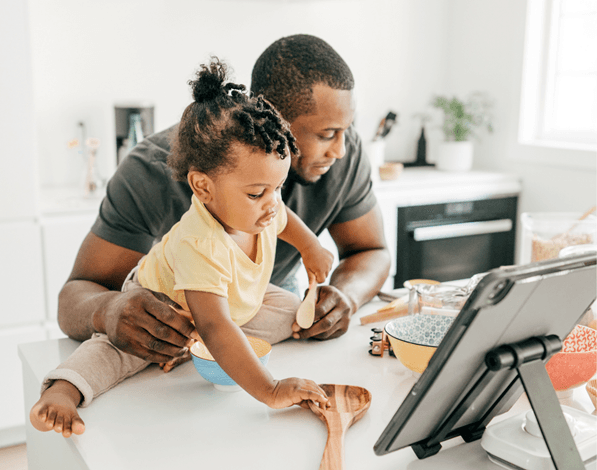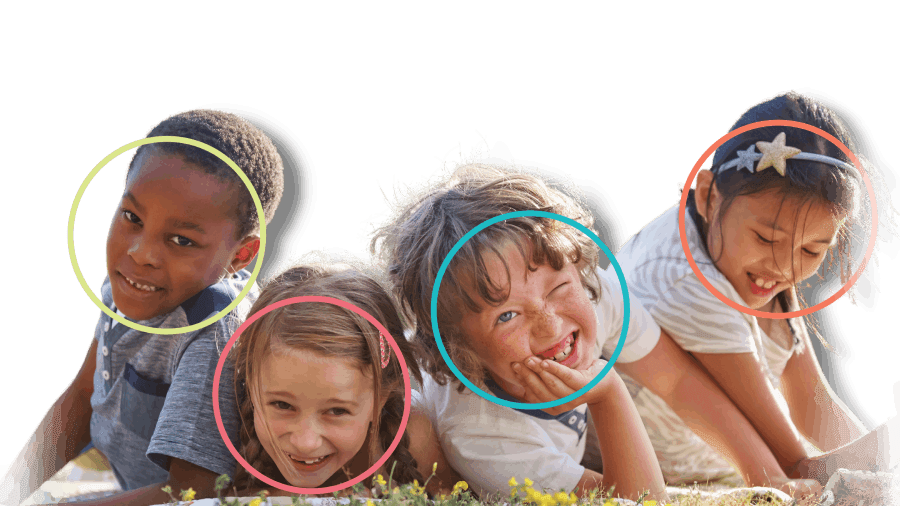The Covid-19 pandemic has undoubtedly impacted our lives over the past year and a half. This unprecedented time has caused many changes, such as our ability to socialize and how we go about our daily routine. Children are no exception. They have also had to endure and cope with the many unpredictable changes that came with the pandemic. Children have not been able to see their friends, their activities have been cancelled, and there have been many ongoing changes to their learning environments.
Varied learning environments have been the result of school authorities and caregivers having to balance the health risks of in-person learning with the educational needs of children. Since March 2019, many measures and strategies have been put in place to help battle against Covid-19 while trying to minimize the discontinuity of children’s learning. Children’s educational settings have varied depending on many factors (e.g., school outbreaks, board decisions, parental decisions), but generally they included school closures with suspended face-to-face instruction, online virtual learning, and face-to-face learning with safety precautions in place (e.g., smaller class sizes, physical distancing, mandatory masks). Not only have children’s educational settings varied, but learning opportunities and experiences within these settings have varied as well. For example, research has shown that some children had unreliable internet access, inappropriate conditions for learning at home and/or limited adult support resulting in reduced learning opportunities in virtual settings (National Center for Education Statistics, 2021; Pier et al., 2021).
Although the goal of the measures was to maximize children’s health and safety while minimizing the negative effects on their learning, children’s learning environments were undoubtedly affected, and there is still much to learn about how these changes impacted student achievement.
What Do We Know About the Impacts of Covid-19 on Children’s Learning?
Although much is still unknown, there has been some preliminary research focusing on the impacts of Covid-19 on children’s learning. In a recent study, Pier and colleagues (2021) studied the academic loss during the pandemic in English Language Arts and Mathematics in grade 4-10 students. Results indicated significant learning loss in both English Language Arts and Mathematics, especially in earlier grades. Furthermore, they found that learning loss was also greater in students from low socioeconomic status backgrounds and English language learners. Another study focused on the learning loss of students’ oral reading fluency. Dominque and colleagues (2021) examined oral reading fluency in grade 2 and 3 students and found that students were achieving 30% behind expectations. Similar to Pier and colleagues, they also found that disadvantaged students experience greater learning loss. Overall, preliminary research suggests the Covid-19 pandemic has negatively impacted some children’s learning, and there also seems to be an inequity depending on the children’s background.
What Can I Do to Help My Child?

Given that preliminary research suggests some children will experience a learning lag from the pandemic, it is possible your child might not be performing at grade level when school begins in the fall. In this case, it will be important to focus on the rate of growth once your child is back in a typical learning environment rather than focusing on potential loss or how your child is performing in comparison to same-grade peers. If you suspect that your child has experienced a learning lag, ask your child’s teacher if your child is improving at the expected rate given the amount of supports provided. If your child is failing to achieve adequately for his or her grade and is failing to show a response to intervention or a slow rate of improvement, then your child may benefit from further assessment and supports to help with learning.
How Can KIDTHINK Help?
KIDTHINK has clinical psychologists on staff who complete psychological assessment services to examine children’s strengths and weaknesses of cognitive and achievement profiles to determine how to best support their learning in the classroom and whether they have any underlying learning disorders that may be affecting their rate of learning growth. Once a psychological assessment is complete, results are commonly shared with school staff to help implement appropriate intervention supports and help them achieve to the best of their abilities.
Written by Megan Hebert, Ph.D., C. Psych.
Clinical Psychologist
References
Chartier, M., Brownell, M., MacWilliam, L., Valdivia, J., Nie, Y., et al. (2016). The mental health of Manitoba’s children. Winnipeg, MB. Manitoba for Health Policy.
Domingue, B. W., Hough H. J., Lang, D., & Yeatman, J. D. (2021, March). Changing patterns of growth in oral reading fluency during the COVID-19 pandemic. Policy Analysis for California Education. https://edpolicyinca.org/publications/changing-patterns-growth-oral-reading-fluency-during-covid-19-pandemic
Government of Canada. (2006). The human face of mental health and mental illness in Canada. Minister of Public Works and Government Services Canada. Retrieved from https://cpa.ca/docs/File/Practice/human_face_e.pdf
Isquith, P. K., & Miron, T. (2021, June). Learning evaluations during and after a pandemic {Online Presentation}. PAR TALKS Mental Health Amid a Pandemic.
National Center for Education Statistics. (n.d.). ACS-ED maps. Retrieved July 20, 2021, from https://nces.ed.gov/programs/maped/ACSMaps/
Pier, L., Hough H. J., Christian, M., Bookman, N., Wilkenfeld, B., & Miller, R. (2021, January 25). COVID-19 and the educational equity crisis: Evidence on learning loss from the CORE Data Collaborative.Policy Analysis for California Education. https://edpolicyinca.org/newsroom/covid-19-and-educational-equity-crisis

MORE COMMON THAN YOU THINK
- 1 in 7 children suffers from mental illness in Manitoba (Chartier et al., 2016).
- 70% of mental health problems have their onset in childhood or adolescence (Government of Canada, 2006).
There Is Hope The good news is that mental illness can be treated effectively. There are things that can be done to prevent mental illness and its impact and help improve the lives of children experiencing mental health concerns. Early intervention is best.
How KIDTHINK Can Help
To make a referral contact us
To subscribe to our newsletter, click the 'subscribe' button.




